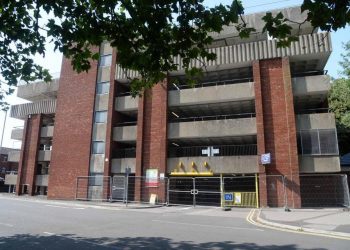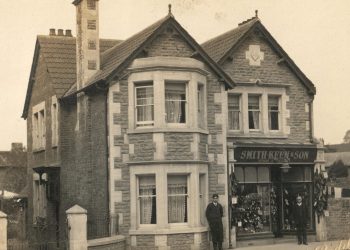The identification of Titanic’s unknown child
A column about days gone by in Melksham by local historian Lisa Ellis
FOR 95 years, the body of a young boy remained unidentified. He was buried in Fairview Lawn Cemetery, Halifax, Nova Scotia, Canada, with the memorial stone reading, “Erected to the memory of an unknown child whose remains were recovered after the disaster to the Titanic April 15th 1912.”
The body of the fair-haired toddler was the fourth person pulled from the ocean by crewman Clifford Crease, from the recovery ship CS Mackay-Bennett, on 21st April 1912 and was the youngest recovered victim of the RMS Titanic.
Descriptions were publicised to try to identify the boy: Male, estimated to be two years old with fair hair, wearing a grey coat with fur on collar and cuffs, brown serge frock, brown petticoat, flannel garment, pink woollen singlet, brown shoes and stockings, probably a third-class passenger.
The sailors aboard the Mackay-Bennett paid for a small white coffin and large headstone, as well as giving him a proper funeral, using the reward money received from Vincent Astor for recovering the body of his father, American business magnate John Jacob Astor IV. The boy was buried with a copper pendant placed in his coffin that read, “Our Babe.”
Speculations arose that the child might have been a two-year-old Swedish boy, Gösta Pålsson, or a two-year-old Irish boy, Eugene Rice – two other fair-haired toddlers who perished in the sinking. In 2002, the American PBS television series “Secrets of the Dead” misidentified the body as Eino Viljami Panula, a 13-month-old Finnish baby, based on DNA testing of three teeth and a small, weathered bone.
In 2007, however, with further advances in DNA technology, researchers at Lakehead University in Canada tested the child’s mitochondrial DNA, which helped positively match the remains to Sidney Leslie Goodwin (9th September 1910 to 15th April 1912), and the re-identification was announced on 30th July 2007.
Sidney was born in Melksham and was the youngest child of Frederick Joseph and Augusta (née Tyler) Goodwin. Sidney had five older siblings – Lillian, 16; Charles, 14; William, 11; Jessie, 10; Harold, 9.
The Goodwins moved to Melksham from the London area and lived in Watson’s Yard off High Street.
Frederick was a printer/compositor, but found employment at Spencers foundry as an engineer’s general labourer – a temporary placement. His brother, Thomas, was living in Niagara Falls, New York, and wrote to Frederick about Schoellkopf Hydroelectric Power Station, due to open that year, which would potentially offer more satisfying employment.
Plans were made for the family of eight to resettle to New York; money was borrowed from Thomas’s sisters and one of their husbands to help the family. They booked third class on the SS New York out of Southampton but due to a coal strike, its passage was delayed and the Goodwins were transferred aboard the Titanic (ticket number 2144, costing £46, s18).
RMS Titanic was the largest ship afloat upon entering service and the second of three Olympic-class Ocean liners built for White Star Line. She sank as a result of striking an iceberg on her maiden voyage from Southampton to New York City. Of the estimated 2,224 passengers and crew aboard, approximately 1,500 died, making the incident one of the deadliest peacetime sinkings of a single ship. The Titanic carried some of the wealthiest people in the world, as well as hundreds of emigrants from the British Isles, Scandinavia, and elsewhere in Europe who were seeking a new life in the United States and Canada.
Sidney’s body was the only one of the Goodwin family to have been recovered.


Support Local News
Help us keep your community connected and informed.
Local news is under pressure more than ever. For just £2 a month, you can support independent reporting that shares local stories, investigates the issues that affect you, and keeps residents up to date.
Choose a monthly subscription or a one-off donation. All donations will be reinvested into producing local journalism for Melksham.
Donate Now






















